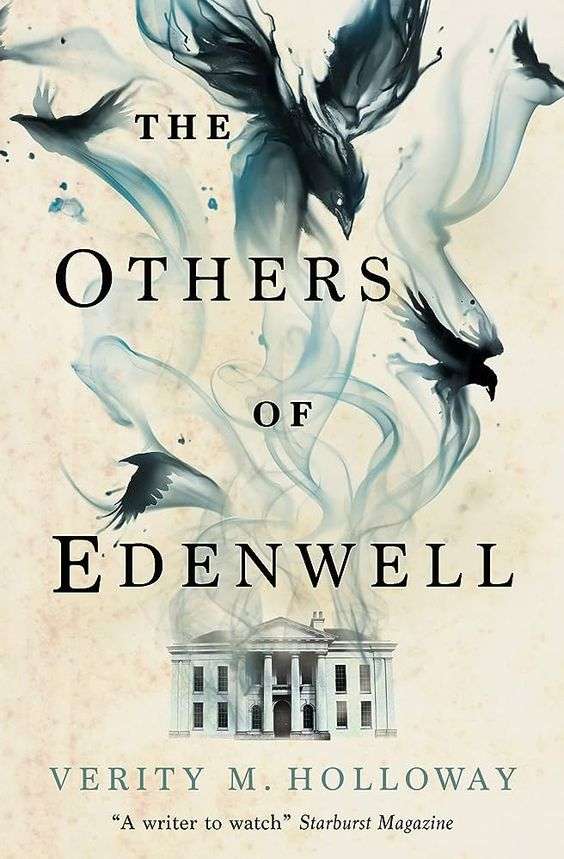We’ve had some issues with emails going to hotmail, outlook and related addresses. If you’ve recently made a purchase using one of these and not received a confirmation email, please get in contact with us – use an alterative email address for contact or purchase if you can.

For all things fantasy, horror, and speculative fiction
Announcement:

The Others of Edenwell
The Others of Edenwell by Verity M. Holloway from @TitanBooks #BookReview #Horror #Supernatural
The Others of Edenwell by Verity M. Holloway
Titan Books, pb, £9.19
Reviewed by Pete Sutton

Norfolk 1917. Freddie and his Fa (dad) are groundsmen at Edenwell Hydropathic – an asylum that has seen better days. Freddie spends most of his time alone, preferring the company of birds to people – the rooks and magpies and especially Drummerboy, his pet jackdaw. He is also an outsider artist – the introductions to many of the chapters discuss pieces he’s painted or collages he’s made. He has a heart condition, so he cannot sign up for the Great War, which causes him much angst.
Newcomer to the Hydropathic Eustace Moncrieff is a troublemaker, desperate to go to war and leave behind his wealthy family. Shipped to Edenwell by his mother to keep him safe from the horrors of the trenches, he strikes up a friendship with Freddie at the behest of Doctor Chalice, the American owner of the Hydropathic.
As the two friends grow closer and grapple with their demons, they discover a body and something terrifying stalking the woods.
The supernatural elements of the story – the fact that Freddie can speak with birds, the terrifying monster in the woods – are seamlessly woven into the fabric of late Edwardian Britain, and although this may disappoint readers wanting a more overt fantastical element, I thought it worked really well. Because what sells this book is its atmosphere of brooding menace. Up there with the classics of gothic literature, this book compels you to turn the pages, and the over 400 of them feel like nothing at all.
And yet. There’s cause to linger, to savour, to wallow. It’s a setting soaked in sepia, almost literally when the war photographer appears. And loss. The men who went to war, the men who remained, the women. Loss permeates everything here. And also a deep melancholy.
There is a frontispiece in the book that reads:
There are three types of men
Those who hear the call and obey
Those who delay
And – The Others
To which do you belong?
Parliamentary recruiting committee
Which explains the title – the others, the left behind, the young, the old, the infirm, the mad, the lost. And you can’t help but ponder which you’d have been (if a man) – I would have been in the list of infirm, and at this remove, having done Wilfred Owen in school, also comfortable with pacifism – but in those days? For what this does well, in the form of its two main characters, is show the psychological toll of not going, the prevailing mood of the country and the attitudes of most. And yet it also shows the physical toll the war took with the orderly Scole and his missing leg and the rag-tag bundle of men brought in when the Hydropathic is commandeered as a place of convalescence for wounded soldiers. Which has disastrous consequences.
As all such rising tension needs a resolution and a denouement, it’s all brought to a satisfying, surprising, but inevitable conclusion.
Holloway has proven an author to watch with this novel, and I can see this as being my book of the year.